ASRock Core 100HT-BD : Bringing HTPCs to the Mainstream Market [UPDATED : Noise Issue]
by Ganesh T S on July 19, 2010 9:34 PM EST- Posted in
- Home Theater
- Arrandale
- ASRock
- Media Streamer
- Core i3
- HTPC
One of the most interesting aspects of the Arrandale platform is the fact that the GPU is integrated in the same package as the CPU. The GPU die also contains the PCIe and DDR3 memory controller. While the main CPU is fabricated in the 32nm process, the GPU die is fabricated in the 45nm process. Placing the GPU and CPU in the same package saves on power and also board costs. The graphics part of the GPU die in the package is an evolutionary version of the Intel G45 IGP. A comparison of the Intel HD Graphics in the Arrandales and the earlier G45 is provided below.

An interesting thing to note here is the availability of dynamic frequency scaling for the Arrandale GPU, which actually lowers the power consumption of the system. A 900 MHz GPU part on a typical Clarkdale system would up the TDP by 15W or more compared to the lowest end Clarkdale with a 733 MHz GPU. On the Core 100 HT-BD, however, overclocking doesn't require any special thermal arrangements. The higher frequencies kick in only when the load on the GPU becomes high.
We had earmarked the Clarkdales as the perfect HTPC platforms earlier this year. This Arrandale offering may actually tempt us to revise our opinions, given the form factor and the power profile. We will cover this in detail in the later sections. In the rest of this section, we will cover the features of the Intel HD Graphics engine, as it relates to HTPC users. Before going into the details, let us take a look at what Intel has improved in terms of video decode and processing in this iteration of their IGP.
DXVA Compatibility
Intel's support for DXVA came in for a lot of criticism during the G45 days. The paranoia inside the company made it impossible for open source enthusiasts to get hold of the special DXVA interface used by Intel. It used to be made available under NDA to various ISVs (Independent Software Vendors) such as Cyberlink, ArcSoft etc. Thankfully, things have been slowly changing for the better. Currently, most applications (except for VLC) are able to take advantage of the DXVA acceleration provided by the HD Graphics engine. The screenshot below gives us a quick idea of the DXVA capabilities of the Core i3-330M in the Core 100 HT-BD. It is interesting to observe that there is no VLD mode for VC-1, but we did observe 1080p VC-1 Blu-Rays play with less than 5% CPU usage on ArcSoft TMT. This just indicates that the interface to full acceleration mode for VC-1 is available only under NDA as of now.
HD Audio Bitstreaming
Right from its debut, the Arrandales have been able to bitstream HD audio from Blu-Ray discs played back through Cyberlink's PowerDVD or ArcSoft TMT. The Core 100 HT-BD is no different. We were able to play back all Blu-Rays with bitstreaming to the AV receiver, as the following screenshots show. In addition, hardware acceleration with Intel HD Graphics shows its class, with low CPU utilization being observed during playback. Despite the red spikes observed in the DPC Latency Checker program, we didn't notice any audio dropouts or stutters in the video.
Using the open source ffdshow Audio Decoder, HD audio can also be bitstreamed out of standalone MKVs and M2TS files. (More on this in the next section)
With the above features, Intel HD Graphics seems to be a winner, and the Core 100 HT-BD could potentially be the utopian HTPC that enthusiasts have been searching for. Is that really the case?
Driver Support - Intel Misses the Boat!
Since the release of the G45, videophiles have been clamouring for the support of 23.976 fps display refresh rate. Intel caved in and released a driver where you could choose 23 Hz in the graphics control panel. Unfortunately, this only results in a refresh rate of 24 fps. While watching videos encoded at 23.976 fps, this results in a small stutter every 40 seconds or so. Most people get past this by setting the refresh rate of their display to 60 Hz. However, dedicated enthusiasts still see this as a major shortcoming of the platform.
Another issue which has remained since the G45 days is the efforts taken to open up the DXVA specifications of the GPU for open source developers. Lot of progress has been made over the years, but full VC-1 decode acceleration remains elusive in applications like MPC-HC or VLC. As we discussed in the DXVA Compatibility subsection, the VC1_VLD mode which is commonly utilized by open source video decoders is absent. However, Intel's marketing team does indicate complete VC-1 decode acceleration. We can only surmise that this is made available for the Microsoft and other ISV decoders to make use of.
The drivers supposedly support advanced deinterlacing, but users do not have as much control over the algorithms used as they have when using ATI HTPC cards such as the Radeon 5xxx series. Noise reduction algorithms are also not transparent to the users. The frequency of driver updates is rather low, and issues continue to remain unaddressed.
If the end user can put up with these iGPU limitations (personally, I can), the Core 100 HT-BD is indeed a very good choice. This will be further elaborated in the next few sections.


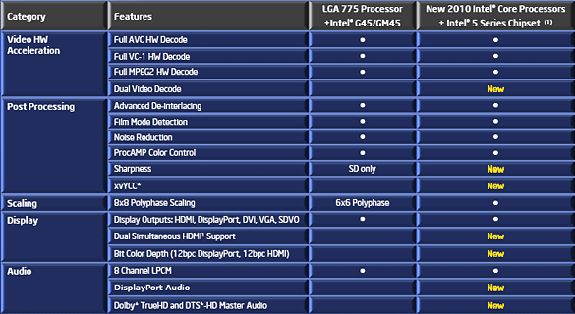
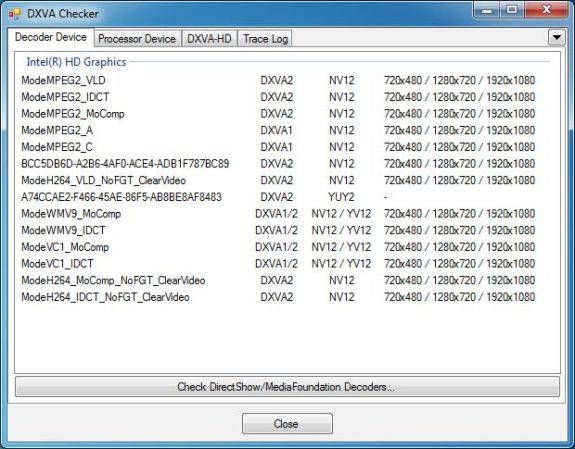
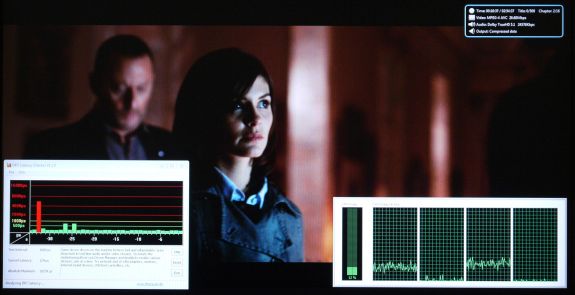
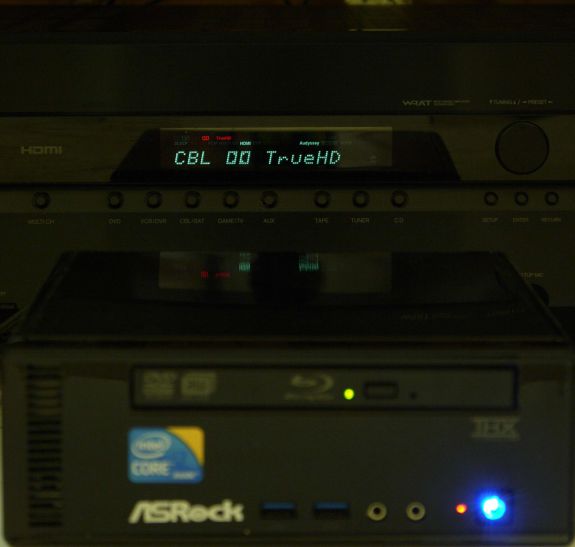
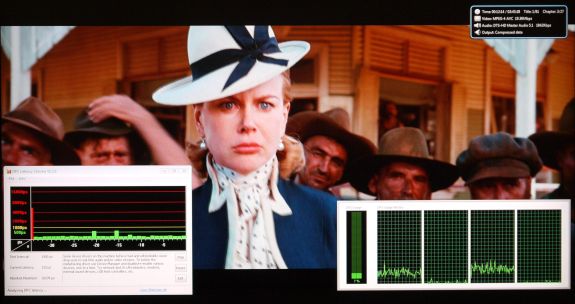
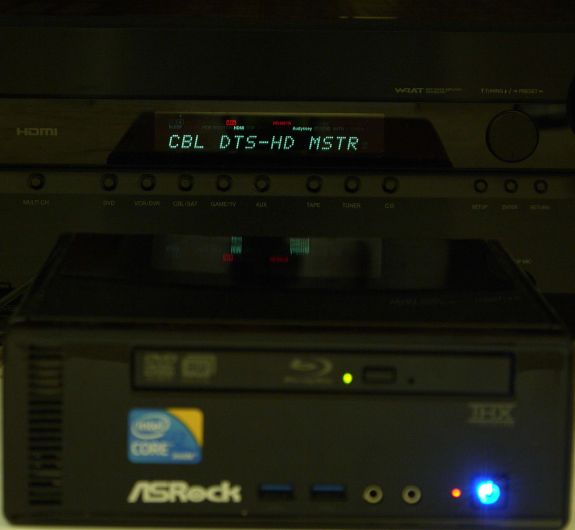








107 Comments
View All Comments
ganeshts - Thursday, July 29, 2010 - link
Decaff,I will do more research on how to perfect the picture quality testing metrics.
For your second point, we do have a HTPC software article coming up (end of August) :)
Third, we just posted a review of the WDTV Live. Reviews of other boxes are coming up :)
BSalita - Saturday, July 31, 2010 - link
I congratulate Anandtech for holding out a comprehensive HTPC suite to quantify the performance of new gear. The industry has been lax in creating a consensus of how to properly test HTPC gear. I hope other review sites will likewise use this kind of test suite. Let the media server wanabees know what their systems must do to find a minimal level of acceptability. Only by holding out such a thorough test will we finally have the means for raising out of the quagmire of incomplete codecs, firmware and lightweight product comparisons.Hrel - Sunday, August 15, 2010 - link
1. No tv tuner2. No gaming
3. 700+ dollars?!
I agree with everyone else. I really see no appeal in this system. Something without a tv tuner and that doesn't function as a gaming system will never be worth more than 200, maybe 300 if the features were really nice.
I don't understand why people can't just use their laptops/desktops? I use my desktop on a 37" HDTV. Gaming, video encoding, internet browsing, torrenting, youtube, hulu, DVR, 2TB of storage internally in RAID!!!! Seriously, it's baffling why anyone would accept less when you simply don't have to.
vanderwijk - Monday, August 23, 2010 - link
I was very surprised to read that because HDMI port on the unit is 1.3a the maximum resolution is only 1920 x 1080. This would mean that my Dell 2408 would not be supported because its resolution is 1920 x 1200 :(A quick check on WikiPedia shows that HDMI 1.3a is capable of at least 1920 x 1200, so what's the deal here? Is this an error in the review or is it really not possible to display more than 1080 vertical pixels?
blacksun1234 - Wednesday, August 25, 2010 - link
Yes, it can support 1920x1200.blacksun1234 - Friday, September 3, 2010 - link
Dear Ganesh,Can it support BD 3D playback with Samsung 3D LED TV?
mega999 - Sunday, January 16, 2011 - link
Can it support BD 3D playback with Samsung 3D LED TV? -or do I need the new asrock visiond 3d one for that because of it's hdmi 1.4?Regards,
mega